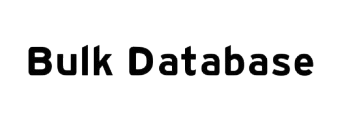HOCHTIEF relies on HOCHTIEF is a technically oriented, globally operating infrastructure group with core activities in construction, services and concessions or public-private partnerships (PPP). The company’s main areas of activity are Europe, Australia and North America. The construction group has been using Microsoft 365 including Teams since 2019, which proved to be a stroke of luck during the pandemic.
DE-CIX – the world’s leading Internet exchange operator and interconnection provider – helps companies future-proof their connectivity requirements to meet the challenge of increasing data volumes and applications.
The challenge
HOCHTIEF employees need reliable access to all resources, regardless of whether they are in an office, on a construction site or working from home. Previously, access was via a WAN backbone from partner Ecotel. This connected around 3,200 users at 100 European locations, 70 percent of which were construction sites. Depending on the location – construction site, office workplace or home office – numerous IP hops, sometimes abroad and back again, were necessary to establish the connection to the Microsoft cloud.
On the one hand, the pandemic increased the use of the systems Kazakhstan Phone Number List themselves, and on the other hand, the increased work from home meant that a VPN tunnel with a firewall and thus an additional network hop had to be installed. Overall, this led to a significant loss of performance and measures had to be taken to provide all employees with fast access to company resources regardless of their location.
Due to its globally distributed architecture, Microsoft 365 is basically optimized for use over the public internet. These optimizations include, for example, the Service Front Door, a Microsoft middlebox to minimize latency between users and the Microsoft 365 Service Entry Point. However, there are still some problems with performance, availability and latency when connecting over the internet. Instead, users should leave the public network as soon as possible and take the direct route to the nearest Microsoft Edge PoP.
Many roads lead to Microsoft
To connect to Microsoft’s cloud offerings, companies basically have a variety of methods to choose from:
1. Internet access through an ISP is a common way for Cell Phone Number Database businesses to connect to Microsoft cloud services. While this is the easiest solution, the best-effort nature of the Internet without end-to-end guarantees is a disadvantage. This can lead to poor performance and poor user experience when using cloud services.
2. Standard public peering with Microsoft (AS8075) at an Internet exchange such as DE-CIX is a solution that is only practical for very large companies that have the required minimum traffic.
3. Dedicated connectivity to Microsoft via ExpressRoute
ExpressRoute Direct provides dedicated connections to Microsoft at up to 10 Gbps when using an ExpressRoute provider. Or direct connections to Microsoft’s routers at up to 100 Gbps in the case of ExpressRoute Direct. With Microsoft 365, as with any cloud application, it is important to avoid hub -and-spoke architectures where traffic is centralize at a single breakout to the internet or an application provider. Microsoft recommends designing local Bulk Database egress points whenever possible. As latency directly impacts user experience and satisfaction. However, while customers can use this connectivity to connect to Azure IaaS and PaaS. ExpressRoute is not designed to meet the requirements of a geographically distribut design recommend for SaaS such as Microsoft 365.
4. The innovation:
Microsoft Azure Peering Service was introduce to offer customers the best experience via an Internet Exchange (IX) such as DE-CIX. The benefits of a standard peering agreement with Microsoft (AS8075) are retaine. But without specifie minimum traffic requirements. There is also no administrative effort for companies. The service offers a dedicate connection between the IX and the company. Resulting in a stable and predictable internet-base connection to Microsoft. The new Azure Peering Service optimally complements the existing options for connecting to Microsoft’s cloud and Microsoft 365 services.


